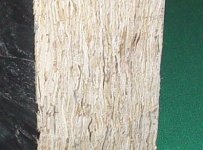What Is Long Strand Lumber?
Long Strand Lumber (LSL), also known as Oriented Strand Lumber (OSL), is similar to OSB, except for the following important differences. The strands used in LSL are longer than those used in OSB. Also, all of the strands are arranged parallel to each other, so that the product is very strong along its length. LSL meets the structural component requirements of the APA -The Engineered Wood Association. LSL is much thicker than OSB because its intended use is to serve as a substitute for dimension lumber. It is suitable to use in place of 2”x4” studs in residential construction applications. Another major use is the flange portions of wooden I-joist beams
What Is Laminated Veneer Lumber?
Laminated Veneer Lumber (LVL), also known as Structural Composite Lumber (SCL), is an engineered wood product created by layering dried and graded wood veneers with waterproof adhesive into blocks of material known as billets. Cured in a heated press, LVL is typically available in various thicknesses and widths and is easily worked in the field using conventional construction tools.
In LVL billets, the grain of each layer of veneer runs in the same direction, rather than cross-lamination which is typical of other engineered wood products such as plywood. The resulting parallel-laminated lumber lumber can out-perform conventional lumber when either face- or edge-loaded. LVL is a solid, highly predictable and uniform engineered wood product that is sawn to consistent sizes and is virtually free from warping and splitting.
One important benefit to LVL is that the veneering and gluing process enables large timbers to be made from relatively small trees of many species, thereby providing for efficient utilization of wood fiber resources. Some of the product's many uses are headers and beams, hip and valley rafters, scaffold planking, and the flange material for prefabricated wood I-joists.

